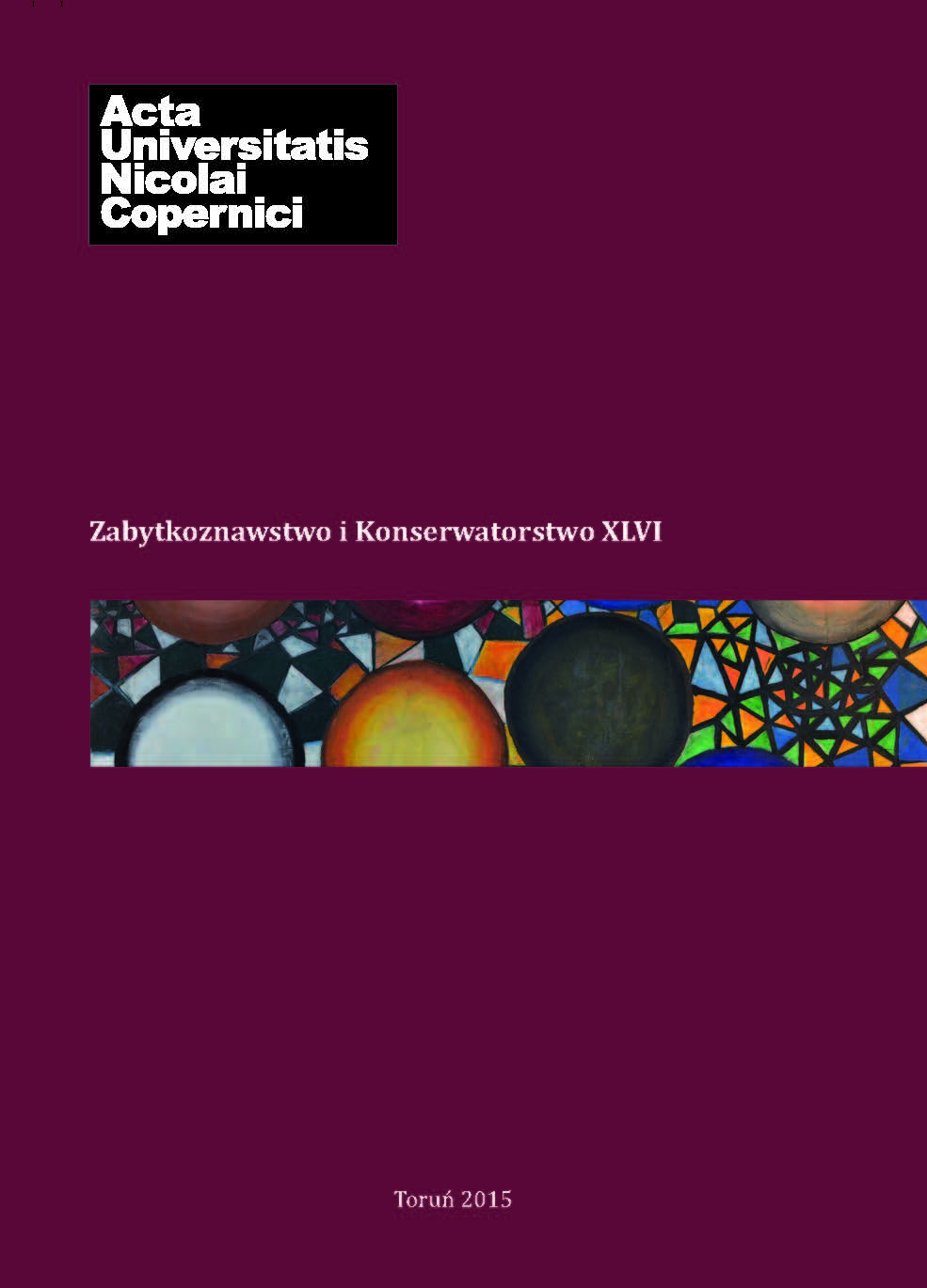Piękne i szkaradne. Motyw maski na drodze rozwoju i transmisji nowożytnej groteski
DOI:
https://doi.org/10.12775/AUNC_ZiK.2015.006Abstrakt
In 1555, the serie of masks by Cornelius Floris was edited in Antwerp. This well known and a comprehensive artist, designed Maski fantastyczne (The Fantastic Masks) and then he separated a motive which was the element of ancient and modern grotesque. His style and projects exerted the significant influence on art, especially in the north of Europe. The origin of grotesque ornament can be found in the ancient paintings. In the second half of XVth century, inside Nero’s House in Rome, were discovered some interior decorations – mostly strange and fantastic creatures like the sea monsters, hybrids, girlands of flowers and masks, covering the walls of ancient interior which delighted some the late Reneissance artists. The mask was connected with the theatre, coming from the rituals in honour of Dionisos and it was not only the symbol of vegetation or rebirth but also the oncoming end of life. In medieval times the apotropaic properties were attributed to it. The grotesque ornaments thanks to printing – houses and graphic artists and also – thanks to many XVI th artists’ journeys, expanded quickly and they used by architects, sculptors, carvers, goldsmiths and especially –by graphic artists. The activity of the artists from Raphael’s School in Rome had the main influence on a grotesque ornament expansion in the whole Europe. They transferred the themes from Nero’s House and their work was willingly engraved by well – known Italian, German and Netherlander graphic artists. The important moment for the spread of grotesque ornament was the invitation from Francis the First to Italian artists to the work of Fontainebleau Castle decorations. The monumental wall decorations, joined a picture and relief, figural and abstract composition with the elements of grotesque, two – way exchange of patterns, Italian mannerism connected with ancient , with the French gothic tradition. It involved to a grotesque reduction from strange forms to dominant cartouche, made mainly by Netherlanders. Within the north grotesque the mask achieved an unusual, fantastic shape of mascaron, mostly in Floris’s and Bos’s art. But, most of all, The Floris’s patterns, by graphic artists and his students, got to the north Europe, also to Gdańsk and Toruń – the main protestant centres in the territory of Royal Prussia.
Pobrania
Opublikowane
Jak cytować
Numer
Dział
Licencja
CC BY ND 4.0. Posiadaczem prawa autorskiego (Licencjodawcą) jest Autor, który na mocy umowy licencyjnej udziela nieodpłatnie prawa do eksploatacji dzieła na polach wskazanych w umowie.
- Licencjodawca udziela Licencjobiorcy licencji niewyłącznej na korzystanie z Utworu/przedmiotu prawa pokrewnego w następujących polach eksploatacji: a) utrwalanie Utworu/przedmiotu prawa pokrewnego; b) reprodukowanie (zwielokrotnienie) Utworu/przedmiotu prawa pokrewnego drukiem i techniką cyfrową (e-book, audiobook); c) wprowadzania do obrotu egzemplarzy zwielokrotnionego Utworu/przedmiotu prawa pokrewnego; d) wprowadzenie Utworu/przedmiotu prawa pokrewnego do pamięci komputera; e) rozpowszechnianie utworu w wersji elektronicznej w formule open access na licencji Creative Commons (CC BY-ND 3.0) poprzez platformę cyfrową Wydawnictwa Naukowego UMK oraz repozytorium UMK.
- Korzystanie przez Licencjobiorcę z utrwalonego Utworu ww. polach nie jest ograniczone czasowo ilościowo i terytorialnie.
- Licencjodawca udziela Licencjobiorcy licencji do Utworu/przedmiotu prawa pokrewnego nieodpłatnie na czas nieokreślony
PEŁEN TEKST UMOWY LICENCYJNEJ >>
Statystyki
Liczba wyświetleń i pobrań: 1307
Liczba cytowań: 0



